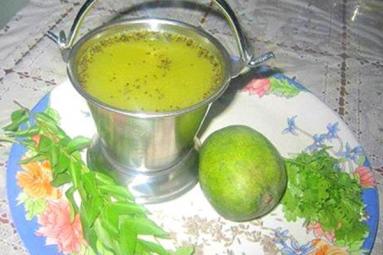 Enzymes are vital to metabolism and food digestion. Consuming homemade fruit (or vegetable) enzymes help our bodies digest, absorb and utilize nutrients while delivering oxygen throughout the body-thereby providing energy.
Enzymes are vital to metabolism and food digestion. Consuming homemade fruit (or vegetable) enzymes help our bodies digest, absorb and utilize nutrients while delivering oxygen throughout the body-thereby providing energy.
Instructions
PREPARATION
Clean a large glass jar with hot water and mild soap. Rinse thoroughly. Allow to air dry.
Wash and air dry fresh and ripe fruit.
Remove peels, which can be used in a vegetable enzyme for cleaning or in compost. Discard pineapple eyes.
NOTE: Use a 3-1 ratio. This means Three (3) part fruit. One (1) part sugar (or honey).
Add the first layer of fruit, cutting as you go by layering 1/3 of the jar with slices of cut fruit pieces (pineapple, oranges, line, lemon and apples solely or in combination are good choices). Avoid contamination by not lying any of the fruit on a countertop or anywhere other than the interior of the jar.
Add a 1/3 layer of brown sugar (or honey) on top of the first layer of fruit.
Repeat this procedure another 2-3 times, alternating fruit and sugar as if making lasagna until full. The last layer should be of sugar (or honey) and you should leave breathing room at the top of the jar.
IMPORTANT: Allow breathing room at the top of the jar. This allows the process to release natural gases.
FERMENTATION
Store the jar of layered fruit and sugar in a cool dry space. After three days and on the sixth day, open the jar and stir the contents. Re-seal the jar (not too tight) and allow the mixture to ferment for a month.
HARVEST
Pour the fruit enzyme into glass bottles using a funnel and sealing the bottles.
PRESERVATION
Store the fruit enzyme in a cool dry place. Refrigeration isn't required.
CONSUMPTION
Drink the enzyme an hour prior to eating to stimulate your nerves and promote blood circulation by placing a tablespoon of the enzyme under your tongue and swallowing.












